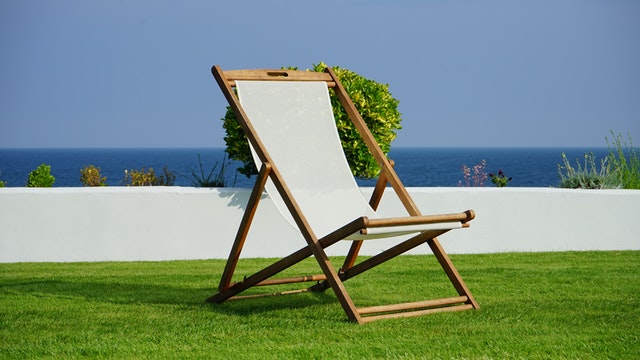In small gardens, upright structures give much-needed additional planting space. In addition, a south-facing wall’s protecting and heat-retentive characteristics are appropriate for plants from hotter climates.
My reason for building a vegetable wall was simple: a desire for daily fresh vegetables and a lack of planting space in my terraced home’s little garden.
Fortunately, my very unsightly, south-facing brick wall lends itself to growing plants on and up as a backdrop to the patio, which doubles as an outdoor party spot. So first, I put timber supports and a wire mesh to the wall for climbing plants like squash and runner beans. Next, I wired gleaming silver containers that started as olive and plum-tomato tins onto this framework. These were perfect for herbs and small bush tomatoes.
Design
Because this vegetable wall also served as a backdrop for the patio, it needed to be both aesthetic and productive. When organizing the pattern of the pots over the mesh, I kept in mind the plants’ habits and eventual heights. Individual pots created highlights and filled gaps, while the troughs, with their strong horizontal lines, helped to split up the space.
Both practicality and aesthetics had to be considered. The wall was challenging to crop and water towards the top without using a stepladder because it was 2.4m (8ft) tall and 2m (6 12 ft) broad. I moved longer-maturing chili peppers and tomatoes higher up the wall for ease. Still, I later learned that the compost is more susceptible to drying winds in this position. To promote regular cropping with scissors, I placed most of my cut-and-come-again crops where they could be easily reached.
The wall’s base gave the most protection and served as a natural heat pocket for cucumbers and aubergines, which prefer warmer temps. Meanwhile, the shade provided by some of the larger plants helped to keep heat-sensitive plants like parsley cool.
Choosing a Location
For the majority of the day, a south-facing wall will receive the full heat of the summer sun, which has both advantages and disadvantages. Container vegetable gardening is also possible on the southwest and west-facing walls.
Materials Required
Before you begin, make sure the wall is sound and free of clutter. Next, take measurements for the walls and choose netting or trellis work that will be robust enough to sustain the desired number of containers and moist compost. It should also allow plants to climb or cling to the structure as they grow. In this case, expanded metal was employed, and the galvanized treatment gave it a modern feel.
Place 5 x 5cm (2 x 2 in) timber battens at appropriate intervals for attaching the mesh. Battens keep the mesh from touching the wall, allowing air to circulate and space for plants and pots to be tied in.
Staple the mesh to the timber frame at regular intervals. This will result in a mesh covering the entire face of the wall. The structure is now complete and ready for planting.
If this all seems too confusing to do, fret not! You can install a beautiful vertical garden in your house in Singapore with the help of Green Turf’s experts.

